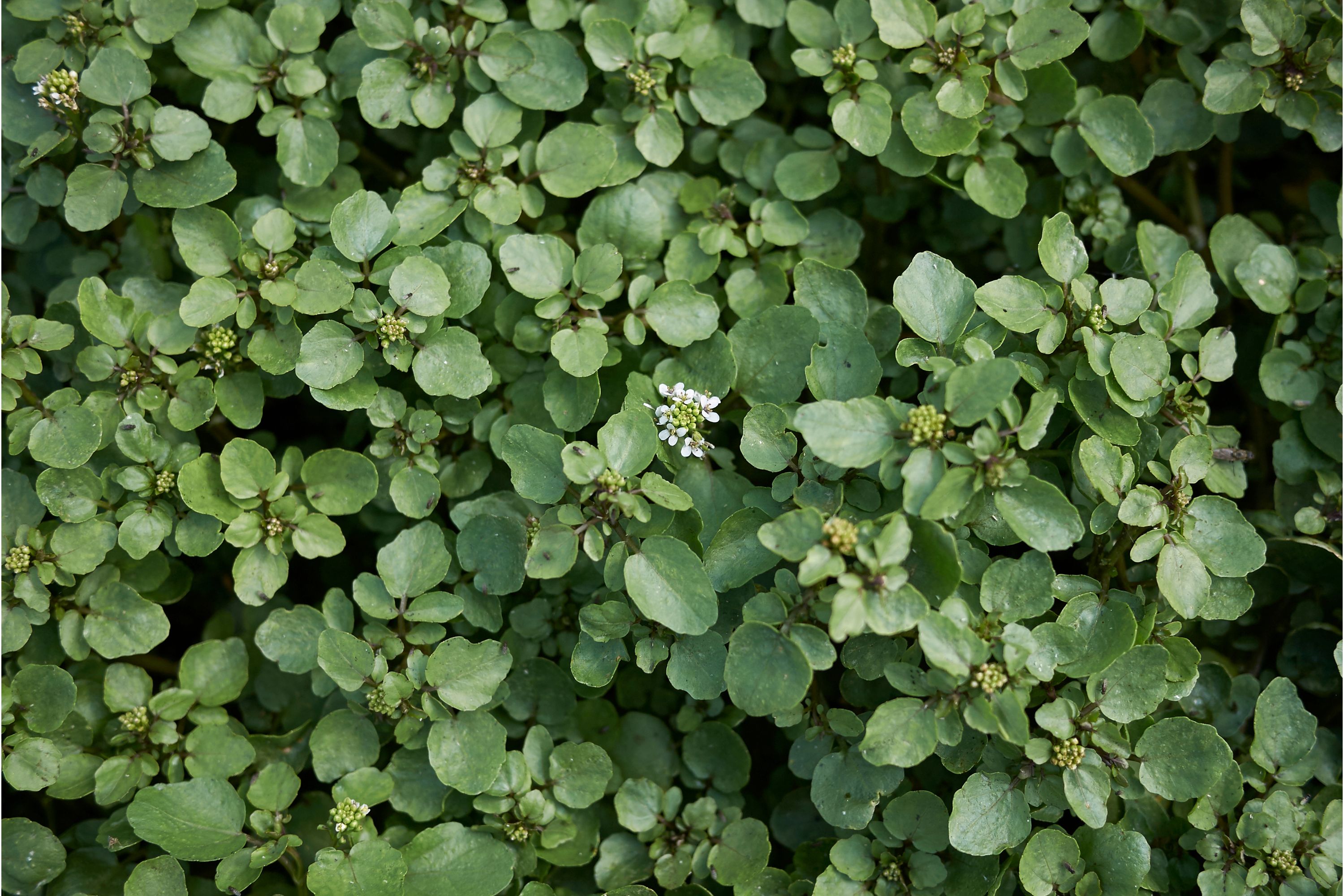Watercress
(Nasturtium officinale)

Description
Watercress or yellowcress (Nasturtium officinale) is a species of aquatic flowering plant in the cabbage family Brassicaceae. Watercress is a rapidly growing, perennial plant native to Europe and Asia. It is one of the oldest known leaf vegetables consumed by humans. Watercress and many of its relatives, such as garden cress, mustard, radish, and wasabi, are noteworthy for their piquant flavors. The hollow stems of watercress float in water. The leaf structure is pinnately compound. Small, white, and green flowers are produced in clusters and are frequently visited by insects, especially hoverflies, such as Eristalis flies. Nasturtium is a genus of seven plant species in the family Brassicaceae (cabbage family), best known for the edible watercresses Nasturtium microphyllum (Rorippa microphylla) and Nasturtium officinale (R. nasturtium-aquaticum). Nasturtium was previously synonymised with Rorippa, but molecular evidence supports its maintenance as a distinct genus more closely related to Cardamine than to Rorippa sensu stricto (Al-Shehbaz & Price, 1998; Al-Shehbaz, Beilstein & Kellogg, 2006). Watercress or yellowcress is a common name for plants in this genus. These plants are related to garden cress and mustard, noteworthy for a peppery, tangy (pungent) flavor. The name Nasturtium comes from the Latin nasus tortus, meaning "twisted nose", in reference to the effect on the nasal passages of eating the plants. Nasturtium foliage is used as food by the caterpillars of certain Lepidoptera, including Orthonama obstipata (The Gem). One species, Nasturtium gambellii, is a federally listed in California as an endangered species in the United States.
Taxonomic tree:







